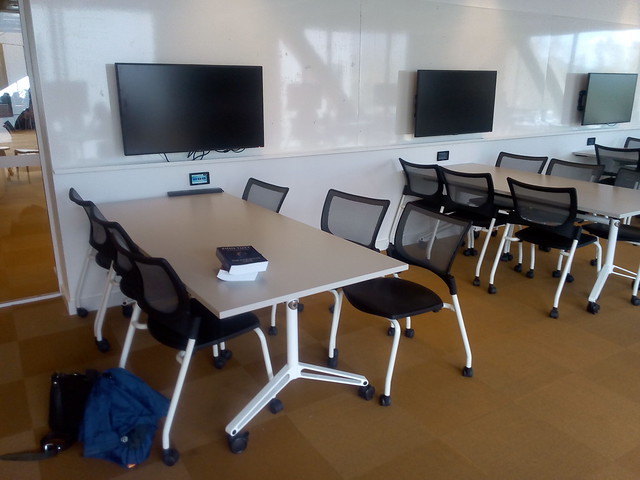One of the benefits of computers in education is that this makes distance education a richer experience and feasible for more students. It also can remove the need for special provisions for when some, or all, students cannot get to campus, such as in the current COVID-19 Coronavirus emergency.
 |
| Pictographs by Carlos Sarmento from the Noun Project (CC BY 3.0 US). |
 |
| Wall mounted LCD screens & desks on wheels at ANU Marie Reay Teaching Centre |
It should also be possible to offer both classroom and online real-time (synchronous) sessions for students. This would use the same software as for distance education, but tied into the classroom's audio-visual system. There should be no need for any special additional hardware or software.

No comments:
Post a Comment